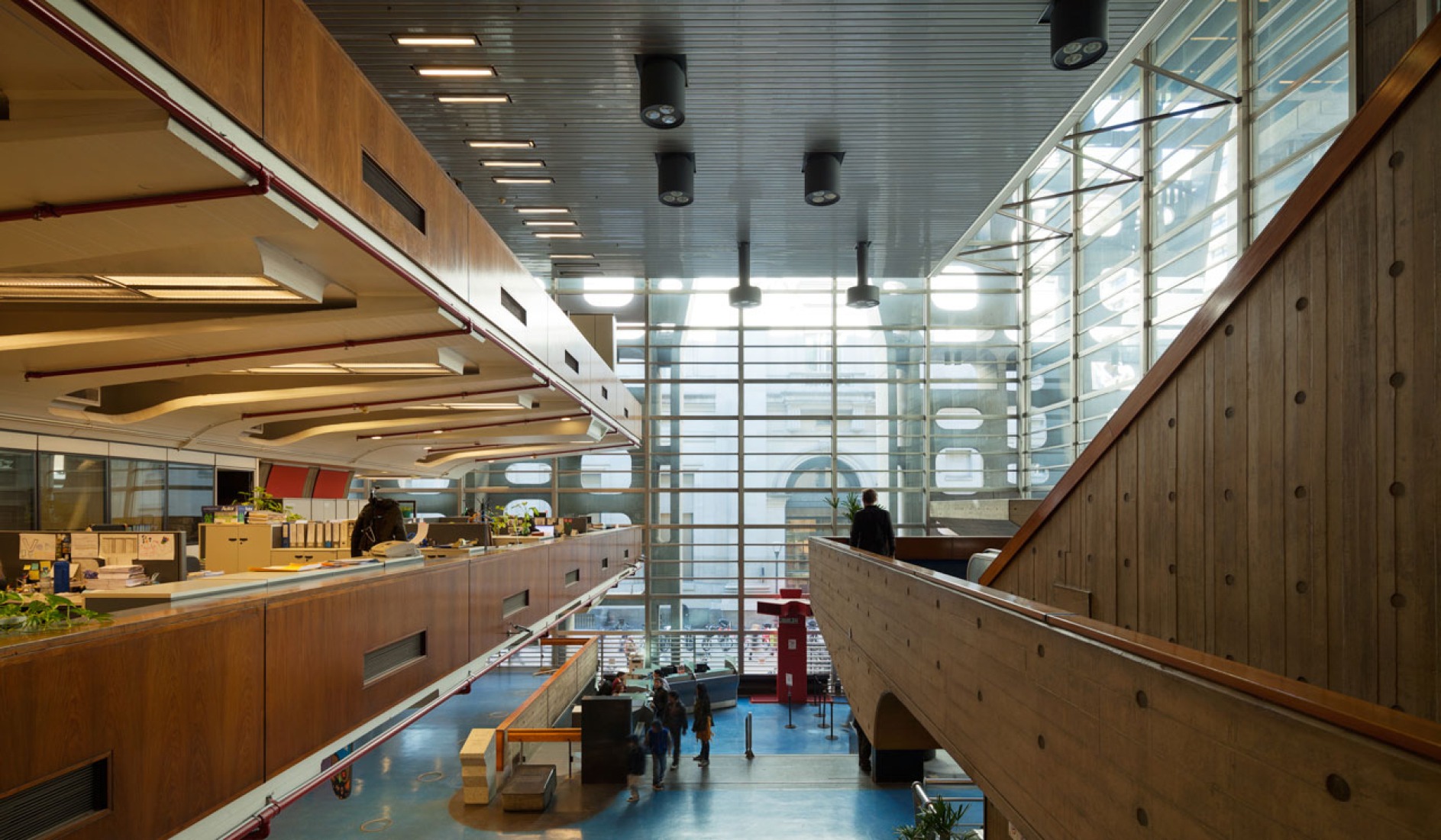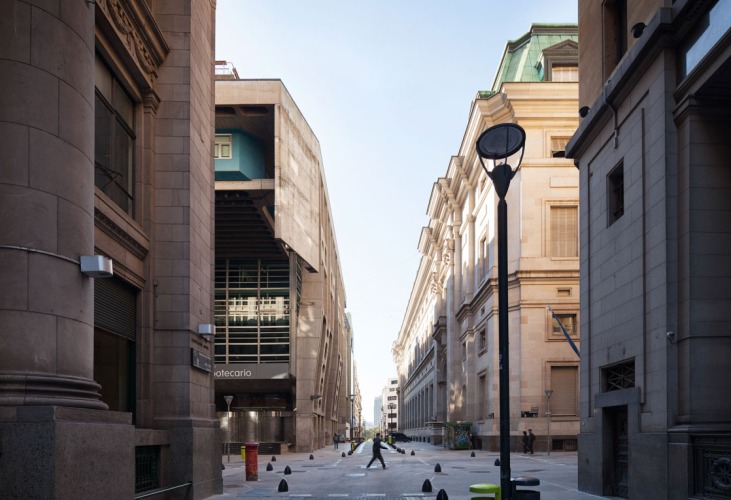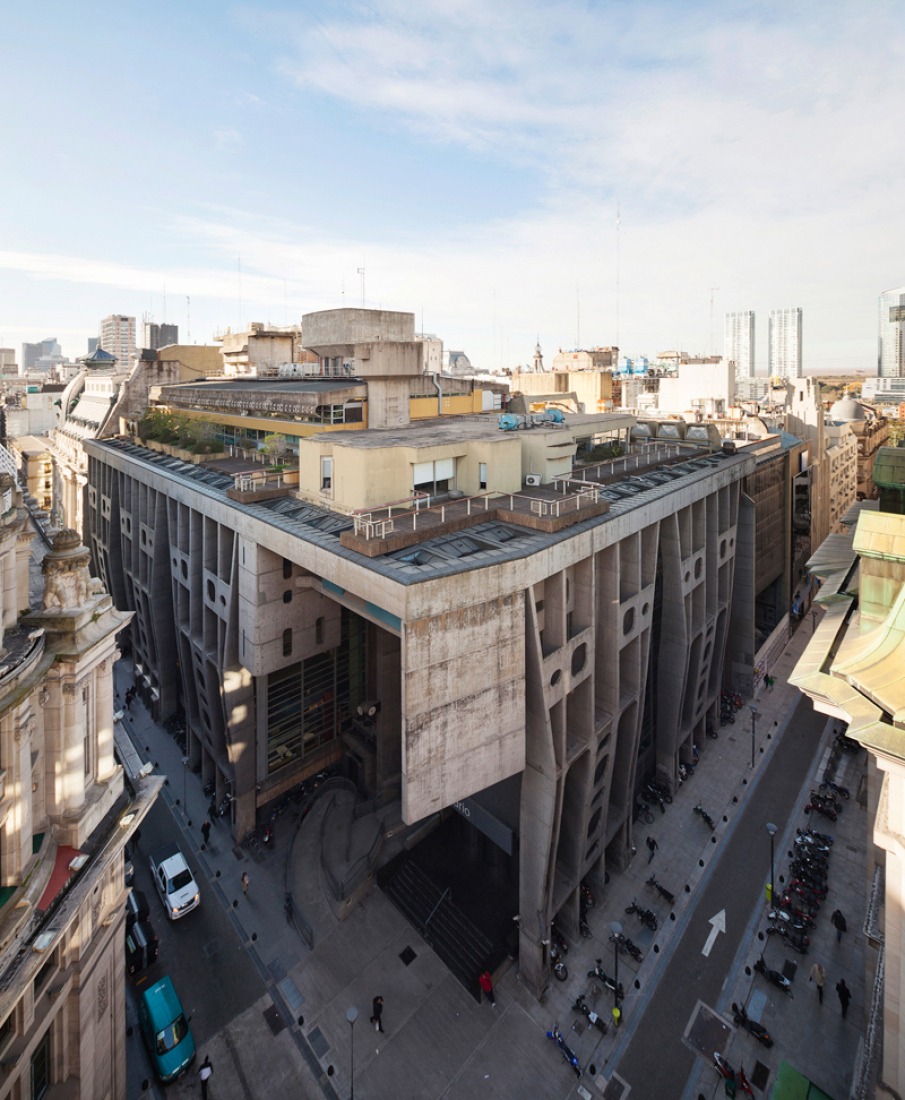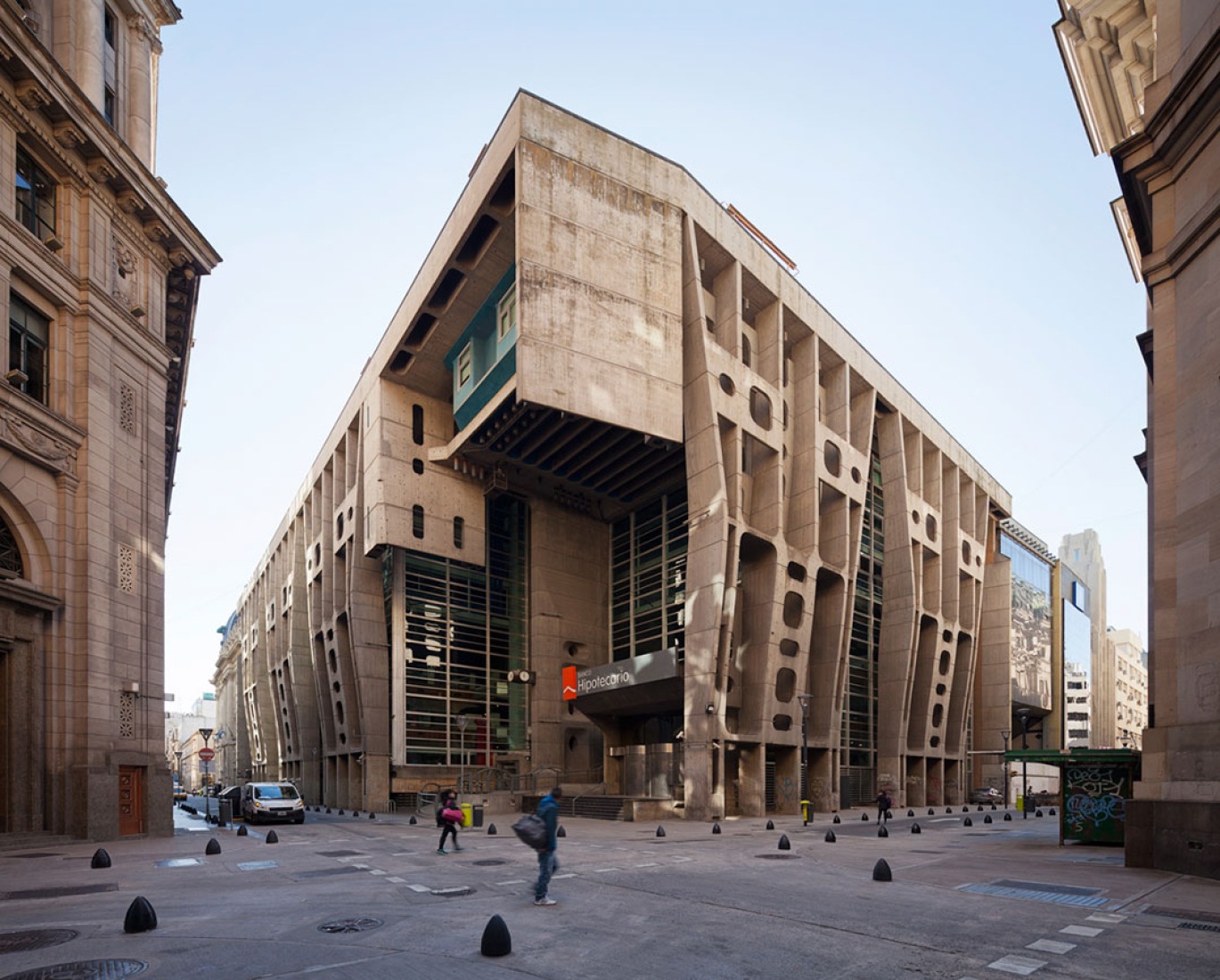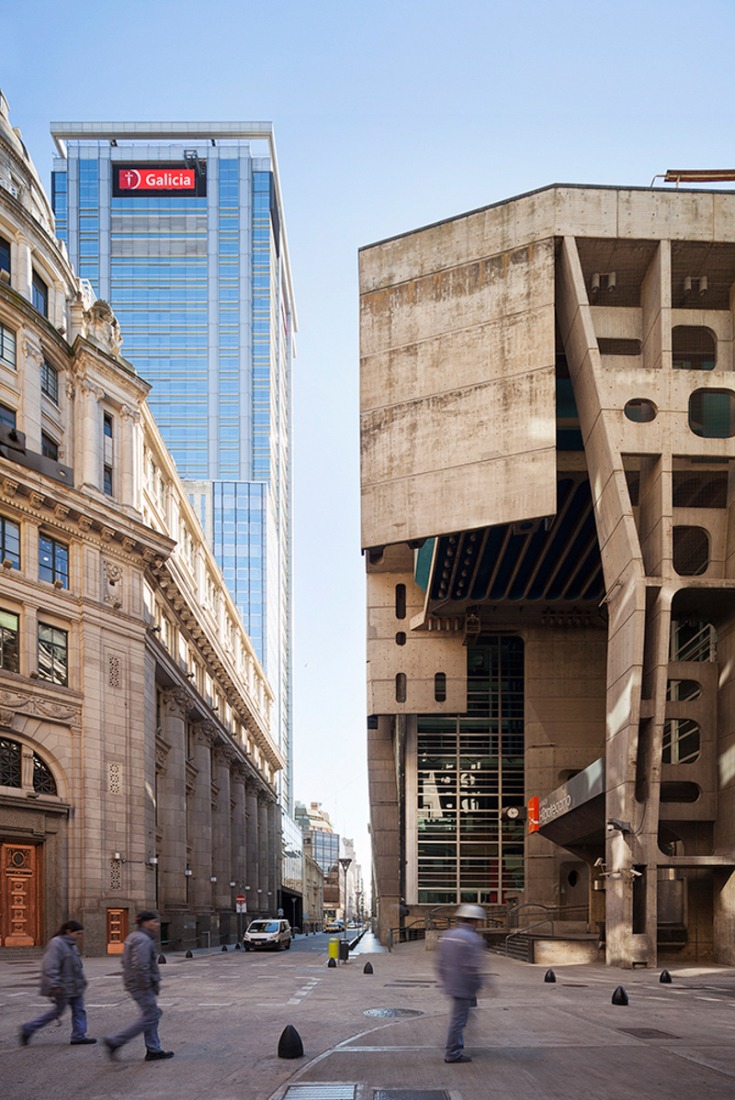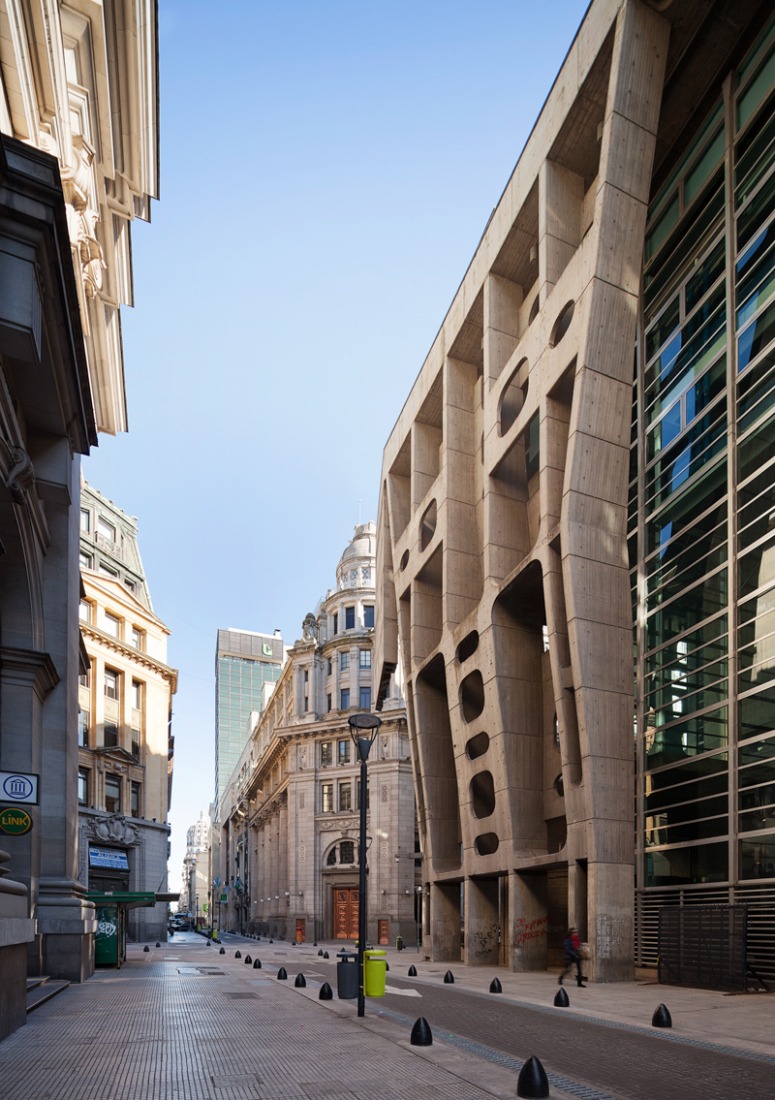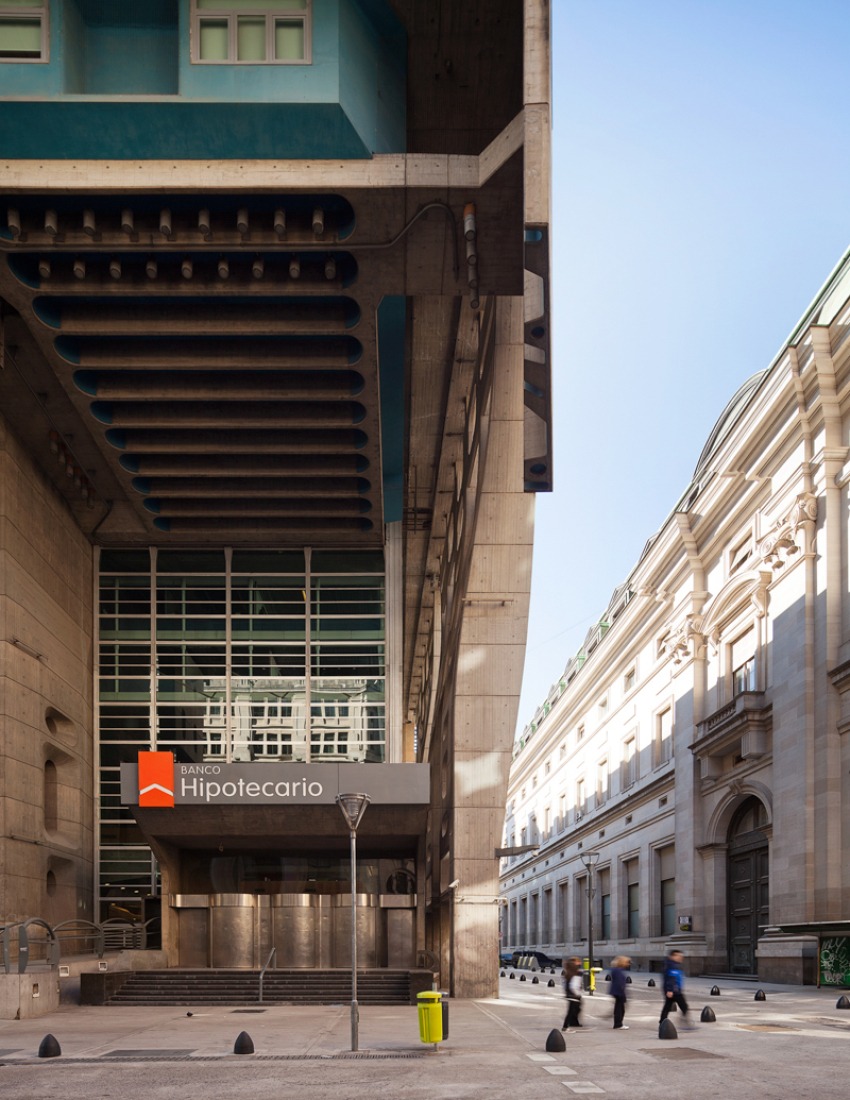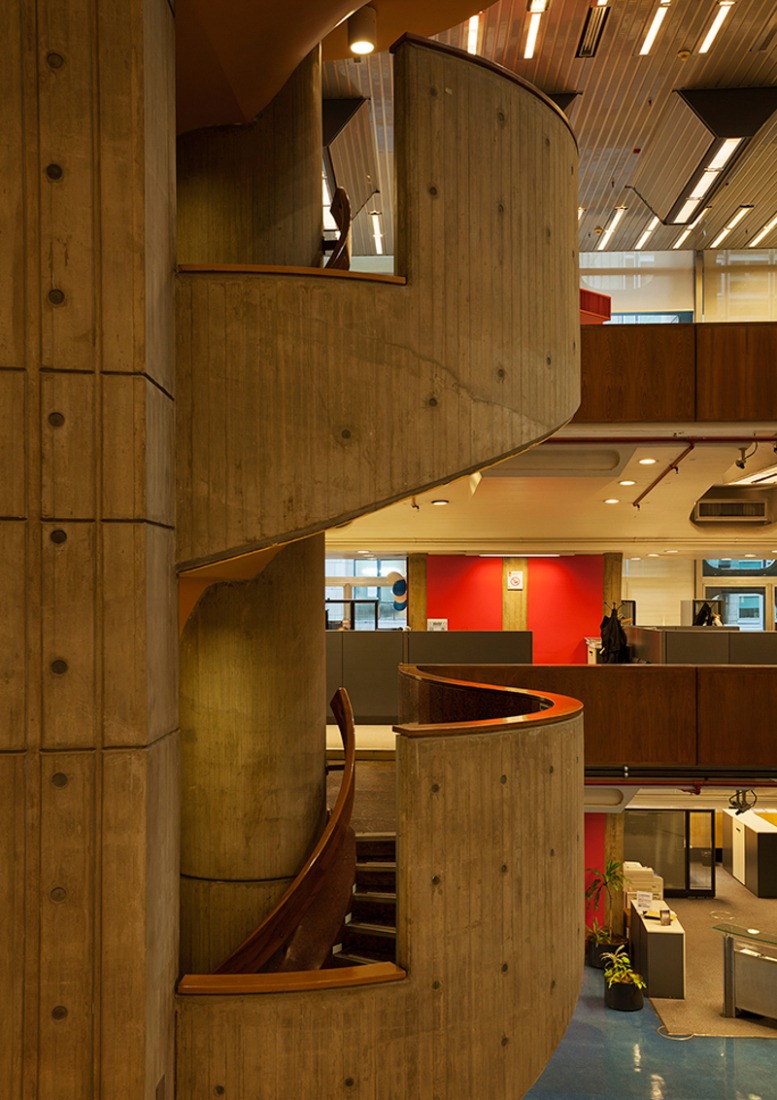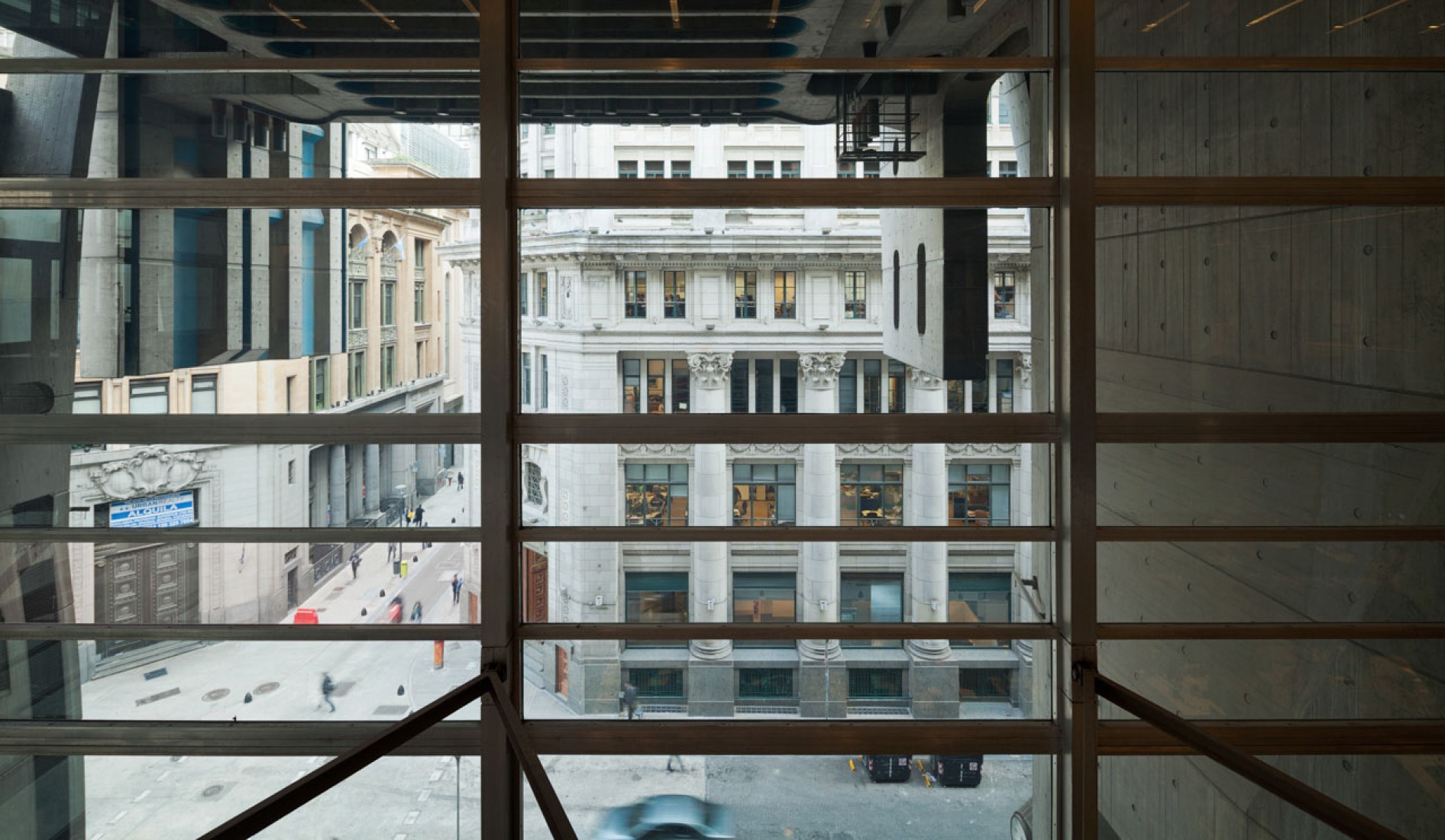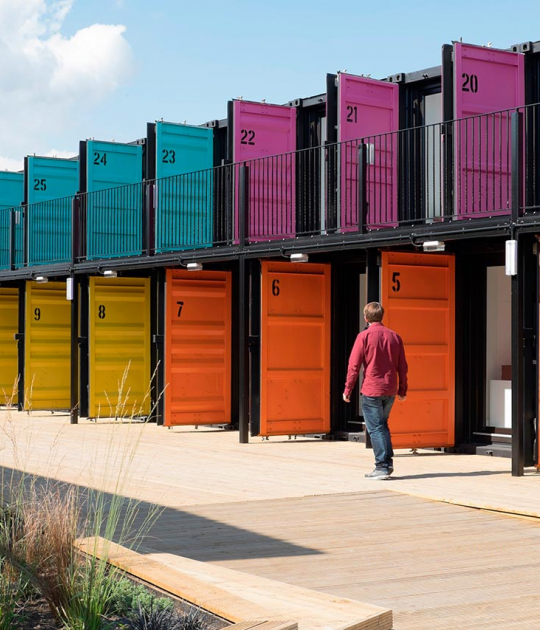The former Bank of London in Buenos Aires is one of the best examples of brutalist architecture of the city. In this photographic report by Federico Cairoli, we see how the Clorindo Testa's building relates to the city, how it opens to the narrow streets of Buenos Aires financial district, creating a continuity of the urban space inside the building, framing the neighbors buildings from inside. In short, all the aspects that make this building so unique to its type.
Surrounded by the National Bank of Argentina, designed by Bustillo in 1940 and other buildings of opaque and heavy facades, the Bank of London reconstructs the municipal lines of both streets with a display of handmade patterned concrete, with curved and perforated forms that frame the city. Behind this outer skeleton runs a clear glass skin. In the corner, the concrete facade breaks and the carpentry glass it is setback to generate the access, emphasized by a suspended concrete wall to limit the visual space.
The intention of the project was to create a continuity between the interior and urban space, a large covered plaza. Space is multiple, complex, infinite, surprising, suggestive, captivating, dynamic. It allows visual views in all directions. The light comes filtered through the perforated walls illuminating surfaces of concrete.
The three lower levels emerge from the ground projecting into the inner space as cantilevers. The top three levels are suspended from the ceiling by steel cables to achieve a greater spatial freedom. The stairs and elevators are sculptural pieces of great dynamism and strong presence in space.
The building, for its urban architectural approach is one of the most original, bold and important manifestations of international architecture of the 60s.
In 1959 the architect Clorindo Testa along with SEPRA studio won the competition for the new headquarters of the then called Bank of London and South America, proposing to modify concepts hitherto motionless in architecture for banks. Today we look at this building through this photo essay that Federico Cairoli shares with us.
More information
Published on:
October 6, 2015
Cite: "Bank of London by Federico Cairoli" METALOCUS.
Accessed
<http://www.metalocus.es/en/news/bank-london-federico-cairoli>
ISSN 1139-6415
Loading content ...
Loading content ...
Loading content ...
Loading content ...
Loading content ...
Loading content ...
Loading content ...
Loading content ...
Loading content ...
Loading content ...
Loading content ...
Loading content ...
Loading content ...
Loading content ...
Loading content ...
Loading content ...
Loading content ...
Loading content ...
Loading content ...
Loading content ...
Loading content ...
Loading content ...
Loading content ...
Loading content ...
Loading content ...
Loading content ...
Loading content ...
Loading content ...
Loading content ...
Loading content ...
Loading content ...
Loading content ...
Loading content ...
Loading content ...
Loading content ...
Loading content ...
Loading content ...
Loading content ...
Loading content ...
Loading content ...
Loading content ...
Loading content ...
Loading content ...
Loading content ...
Loading content ...
Loading content ...
Loading content ...
Loading content ...
Loading content ...
Loading content ...
Loading content ...
Loading content ...
Loading content ...
Loading content ...

